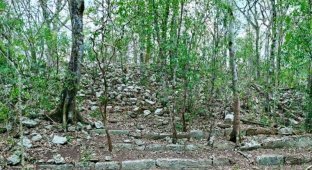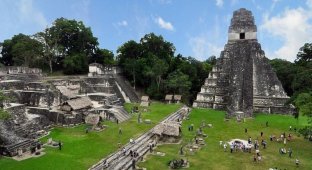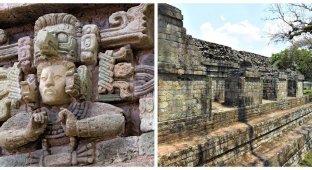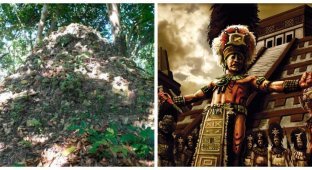Witch, gnome, ancient Mayan culture and the Pyramid of the Magician (13 photos)
Located among the otherworldly landscapes of the Yucatan Peninsula, the ancient Mayan city of Uxmal is an unusual place that combines the unique architecture and mythology of this people. At the very center of this archaeological wonder stands the Pyramid of the Magician, a cosmic structure that defies standards with its unique shape. 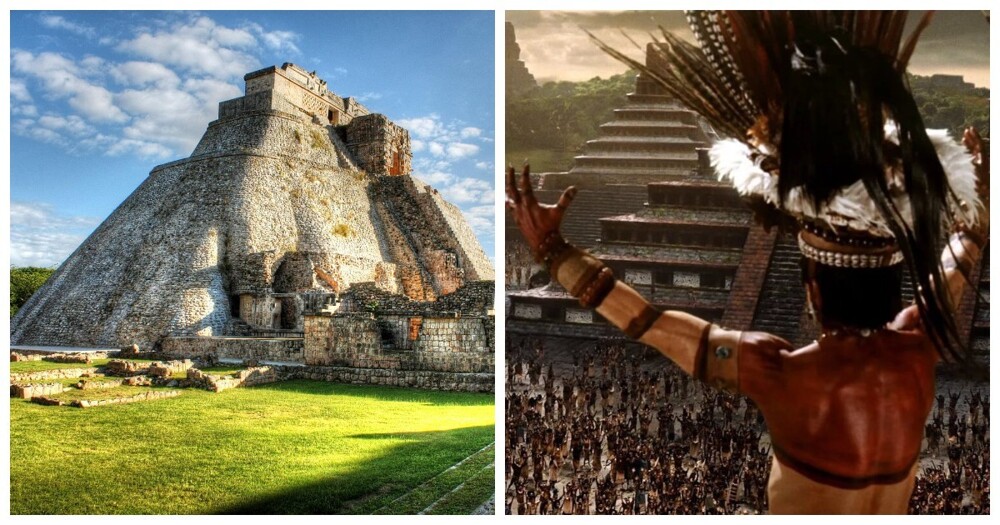
This extraordinary landscape serves as the setting for a magical legend - the tale of the dwarf and witch who built the Wizard's Pyramid.
Magic egg 
Because the legend of the Pyramid of the Magus was not recorded in ancient texts, the only versions of it are oral retellings passed down over the years by the indigenous Mayan people. There are many different versions of this story with slight variations. 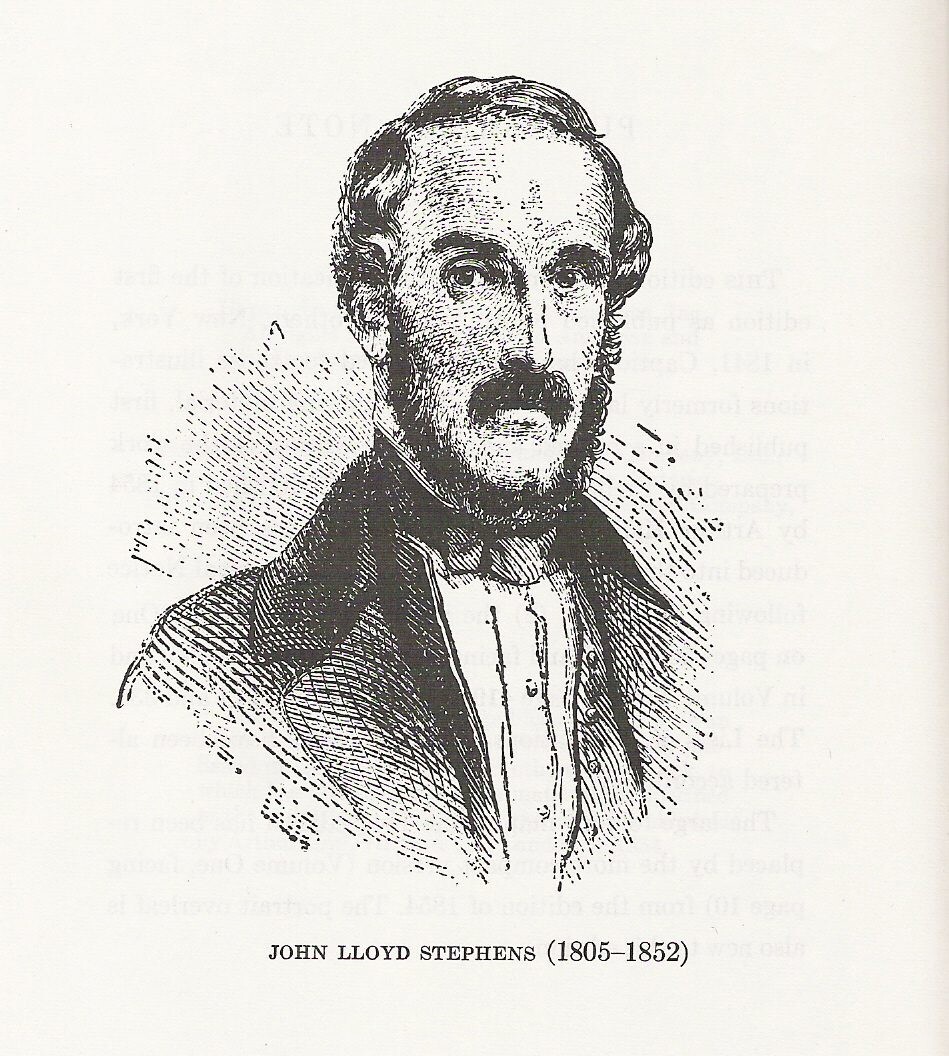
The most famous version of the legend was told by John Lloyd Stevens, an American explorer, writer and diplomat, who visited the site twice in 1839-1841. It was he who glorified the Pyramid in his book “Random Travels in Yucatan”. In 1840, Stevens talked with a local, who told the researcher this story. 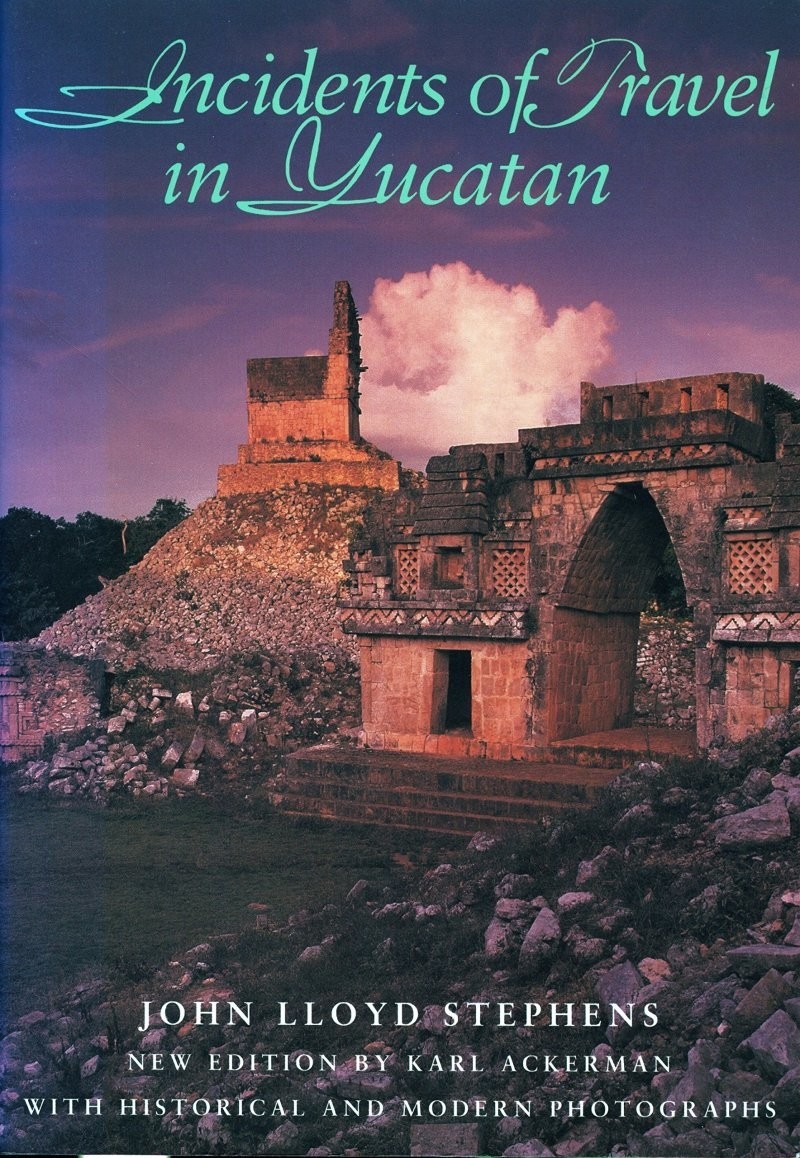
Once upon a time, on the site where the pyramid now stands, there was a hut in which lived an old woman, rumored to be a witch. She was childless, but really wanted an heir. And I decided to create it using magic.
She took the egg, wrapped it in cloth and hid it in the corner of her hut. The witch checked the egg daily until one day a small child-like creature emerged from it. 
The delighted old woman called the baby her son. She fed him and took care of him so much that a year later the little man behaved like an adult - he walked, talked, and developed. True, the child stopped growing, but she was incredibly proud of her son and told him that one day he would become a great lord or king.
Soon after this, she ordered her son to go to the house of the local ruler so that the dwarf could challenge the king to a duel. At first the baby refused, but the mother insisted, and, being an obedient son, he finally agreed. Seeing no threat, the royal guards allowed him in, and the king accepted the dwarf's challenge. 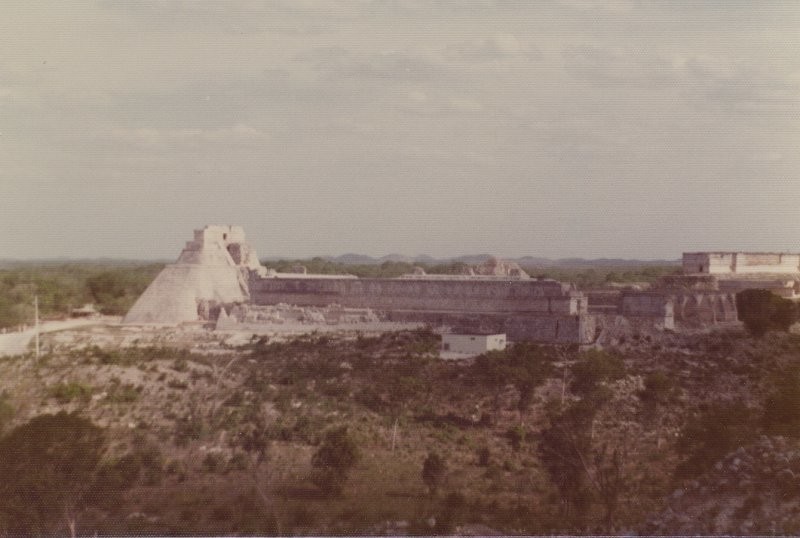
View of the ruins of the city of Uxmal
The test was simple: the king required the dwarf to lift a stone weighing three arrobes (an old unit of weight measurement), equal today to 34 kg. The frightened dwarf ran away, crying, to his mother, to whom he said that he could not do this. However, the witch sent her son back to the king with a message.
He told the king to lift the stone first and then he would do it too. Of course, the king picked up the stone, and the dwarf followed suit. A little worried, the king spent the rest of the day checking on the dwarf, who was passing increasingly difficult tests. It seemed that everything the king could do, the dwarf could do.
Construction of the pyramid 
Ruins of the palace in Uxmal
The embarrassed and indignant king soon had enough and decided to give the dwarf an impossible task. He must build a house that will be taller than all other buildings in the city. He had only one night to work, and if he failed, the king would put him to death.
And again the poor gnome ran to his mother. She told him not to give up and to go straight to bed. The next morning, the kingdom awoke to find the Mage's Pyramid completed and towering over the rest of the city. 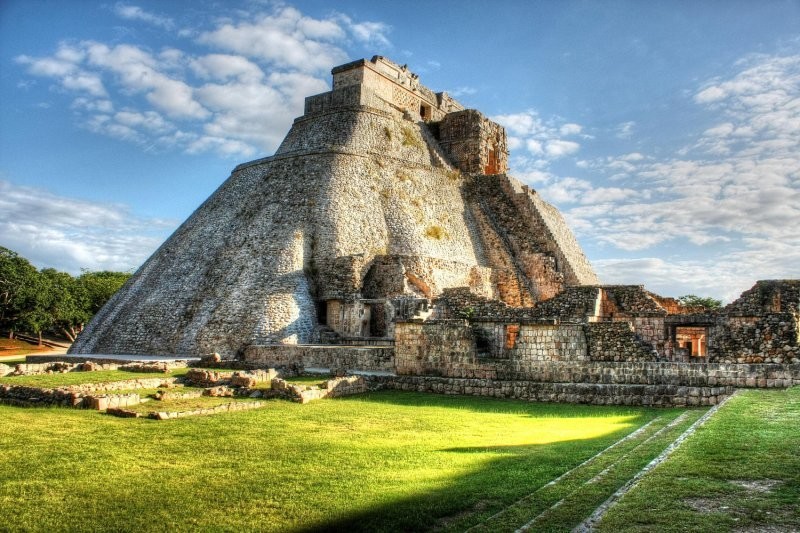
Wizard's Pyramid
The king was unhappy and called the dwarf. He came up with another test and ordered the dwarf to go and bring two bundles of branches from a particularly strong tree. First the king had to break the logs on the dwarf's head, and then the dwarf had to do the same.
The son returned to his mother for the last time. The witch told him to calm down and put a magic cake on his head. The test took place in front of the richest and most influential people in the city. The king broke stick after stick on the dwarf's head, but to no avail. He tried to abandon his trial, but it was too late.
The second stick, which the dwarf smashed against the king's head, smashed his skull into pieces. He died at the feet of the gnome, and the gnome became the new ruler. He continued to rule Uxmal for many years. 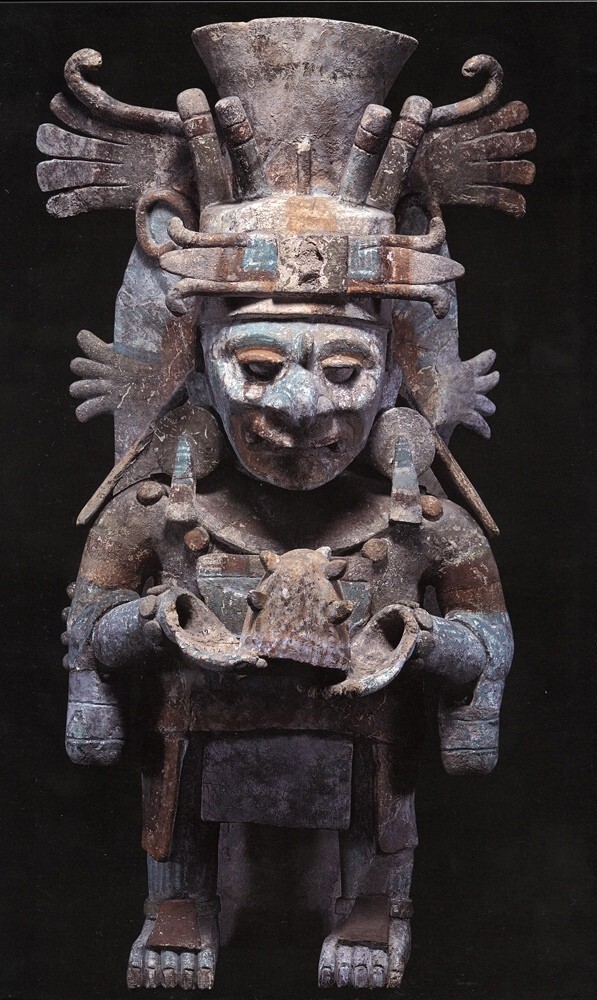
God Itzamma
In one popular version, the dwarf is a god named Itzamma or Itzamna, and he himself built the pyramid using magic.
Itzamma was an important creator god and magician in Mayan mythology. In other versions, the dwarf is depicted as an ordinary boy (not hatched from an egg) who is magically raised overnight by a witch.
There is also a version outlined in a modern tourist guide, which says that it was predicted long ago that one day Uxmal would be led by a boy “not born of a woman.”
Local mythology 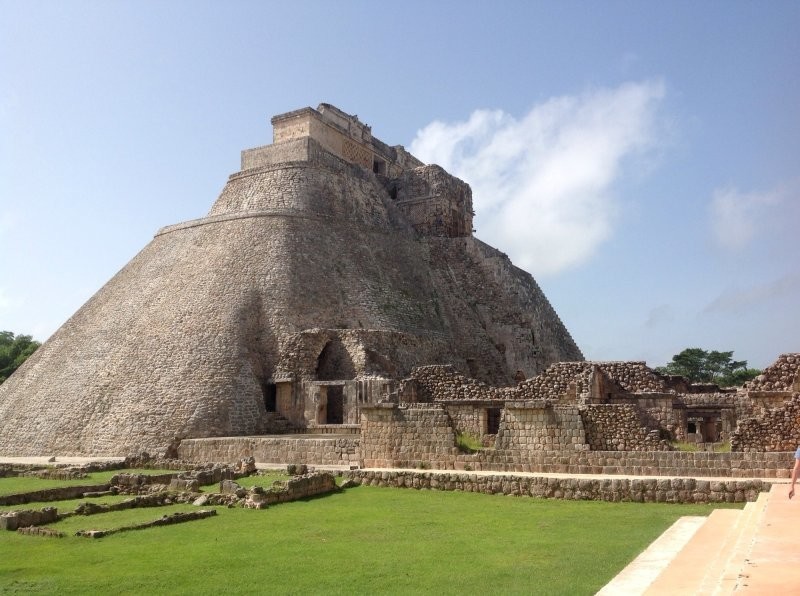
The legend likely arose as a way to explain the unusual and unique features of the Pyramid of the Magician, such as its unconventional elliptical shape and rapid construction attributed to a mystical dwarf. Archaeologists believe the massive pyramid took three centuries to complete and was created through the traditional practice of overlaying, meaning the pyramid grew as new structures were built on top of old ones. Translated from the ancient language, ox-mal means “built three times.” 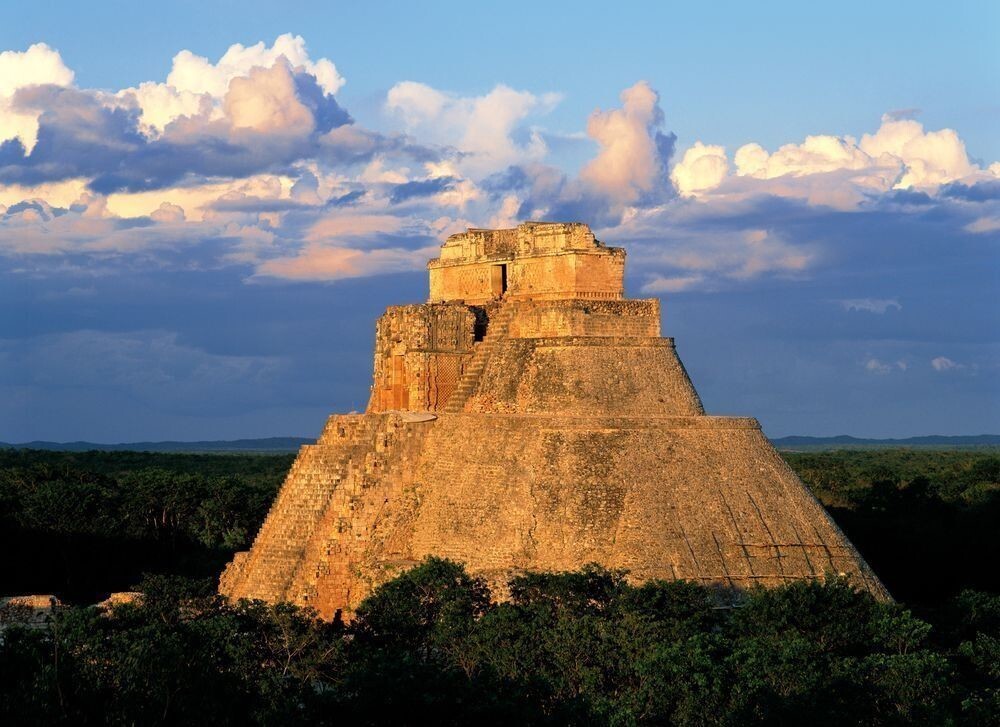
The pyramid was built around 1000 AD, when the Mayan civilization began to decline. Since there were no written records, subsequent generations told a legend to explain the origin of the massive building, which they could not otherwise explain. 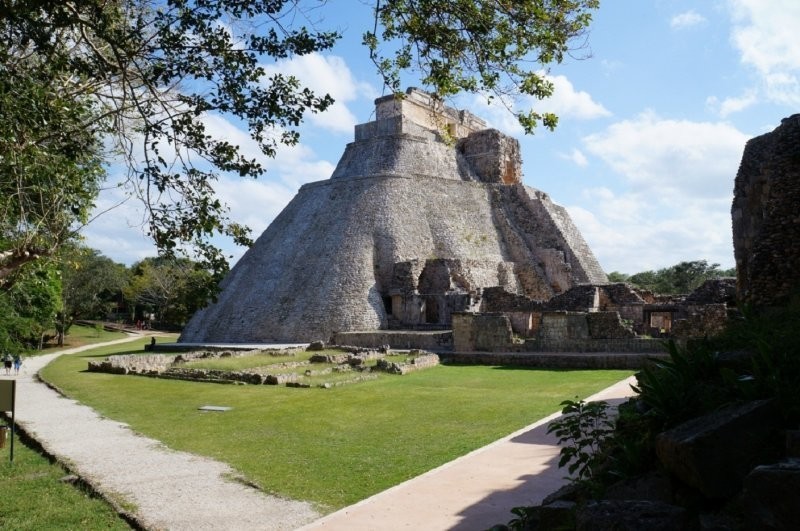
Archaeologists believe that the Pyramid of the Magician was originally plastered and decorated with multi-colored patterns. But over time, the colors faded and washed away. And the majestic structure remained in its original natural form. In addition to its shape, it has another unusual effect - acoustic. If you clap your hands loudly at the foot of the stairs, you can hear the cry of the quetzal, a bird sacred to the Mayans.
Climbing to the top is prohibited. But even without this, it is clear that the Wizard’s Pyramid is an amazing structure. It can be seen from anywhere in the ancient city. 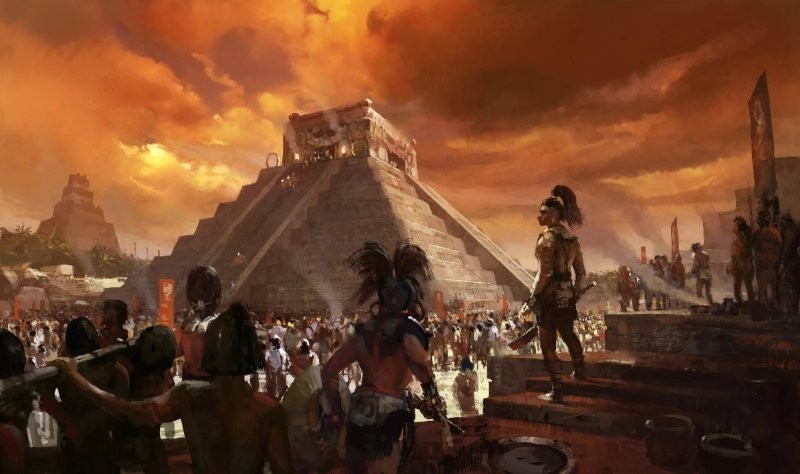
After the Mayan civilization collapsed, its architectural wonders remained, which were already difficult to explain to the descendants of the ancient people. This is how legends began to appear, like the story of the Wizard's Pyramid.
Someday, even the most developed and powerful civilization will be swallowed up by the sands of time. And magical stories and legends remain reminders of it as attempts to explain to descendants the skills of their ancestors.












